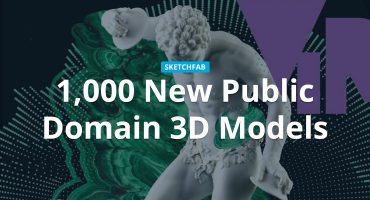About Us
La Crosse County Historical Society (LCHS) discovers, collects, preserves, and shares the history of La Crosse County, Wisconsin. We are a small, local institution whose passion is regional history. We share local history through interpreted exhibitions at our historic house museum, Hixon House, and at a small museum, Riverside Museum. Other programming includes an annual cemetery tour with actors portraying characters from La Crosse’s past, and Folk Life La Crosse, a festival of traditional crafts, with demonstrations and hands-on opportunities for visitors.
Because our exhibition space is so limited, we work hard to share artifacts in other ways. LCHS has a column in the local newspaper, “Things That Matter,” and each weekly article features an artifact from our collection. We also share our collections through our online database. We are excited to be adding 3D models to this database, and every time we complete a new model we feature it on Facebook and on our website.
The 3D models created by LCHS are a collaboration with the University of Wisconsin-La Crosse Archaeology and Anthropology Department. Dr. David Anderson and Sofie Kinzer are responsible for the process and LCHS provides the artifacts.
Sofie: I am a student of the University of Wisconsin-La Crosse Archaeology and Anthropology Department with a major in archaeology and minors in anthropology and linguistics. I am a former intern and current volunteer at the La Crosse County Historical Society. I have been doing photogrammetry for about a year and really enjoy applying the process to my academic interests and cultural heritage. The La Crosse County Historical Society has given me a wonderful opportunity by allowing me to work with their collections.
Dave: I am an associate professor of archaeology in the Department of Archaeology and Anthropology at the University of Wisconsin-La Crosse specializing in the origins of Egyptian civilization and the application of advanced technologies to archaeology.
LCHS knew that the UW-L Archaeology and Anthropology Department was introducing its students to 3D scanning. LCHS thought that using artifacts from their collections to create 3D models would be great experience for the students as well as a way to expose the collections of the LCHS to a wider audience. Sofie was the first intern with an emphasis in 3D scanning who was working with Dr. David Anderson.
Why 3D?
LCHS is using 3D content to share artifacts in their collection while they do not have a physical museum to share them in. The exhibits that we have in our two museums, Historic Hixon House and Riverside Museum are static. LCHS has thousands of other artifacts in their collection that are not on display due to the lack of a local history museum. Through Sketchfab, LCHS’s collections are now accessible on a global scale successfully fulfilling their mission of sharing the history of La Crosse County. The 3D models are a different way of thinking about artifacts and the role of the historical collection. They provide an avenue that encourages the public to interact with the past.
For example, the model of Mons Anderson’s lion statue gives the viewer an opportunity to go inside the lion’s mouth and see his detailed teeth, while this is not something that is physically possible, the model makes it reality. The models are also changing the level of accessibility of the artifacts. Previously the only way to view an artifact was to physically travel to the museum. Now the artifacts are available with a few simple clicks. The same information and history is being shared, but in a more accessible manner at school, in the home, or even on a smartphone.
https://skfb.ly/69SRH
Workflow and Equipment
A standard museum photography setup was used including photo light stands, cloth backdrops, and a Canon EOS Rebel T5i DSLR 18MP camera. Additionally for some objects an IKEA lazy susan with printed targets is used. All our photographs are processed through Agisoft Photoscan.
The diversity of objects (with respect to size, material, texture, shape, etc.) selected for scanning presented several challenges. Lighting setups had to be continually adjusted to obtain good resulting meshes and textures. Additionally, space availability at LCHS required the creation of both interior and exterior temporary photography stations.
Advice
Do not be afraid to try different objects that you might feel won’t turn out. We were hesitant to try scanning textiles, and while those have been some of our most challenging models to produce, they were also some of our most successful scans. Also, take the time to get the lighting right. In several cases it has taken us longer to post-correct for bad lighting than to have just worked on correcting the lighting setup from the start.
How 3D is changing the way museums and cultural organisations work
We have seen articles that address 3D scanning artifacts and printing them so that they can be taken into the classrooms. We would hope that LCHS could also do this someday with the artifacts in their collection. Museum cases are restricting – 3D models add another element that is not necessarily visible even in the museum.
Some of our favorite historical models on Sketchfab
Dr. Anderson:
Sofie:
Sketchfab / Website / Online Collections / Instagram / Facebook / Pinterest




